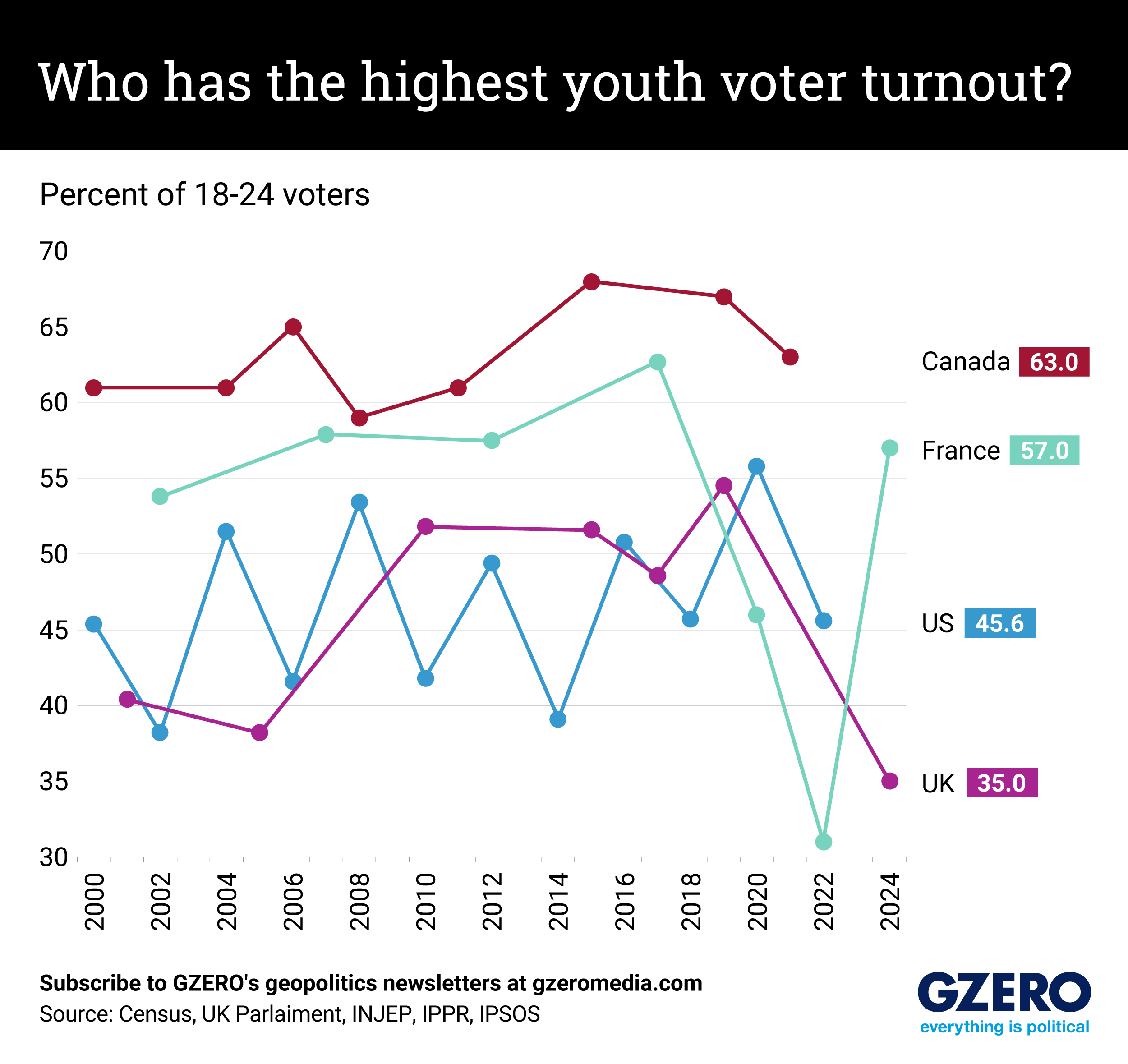September 12, 2024
Ah, the elusive youth vote, a demographic that has been historically unreliable in terms of turnout — but will be key in the extremely close US election. In the 2020 election, about half of voters under 30 voted, up from 39% in 2016. Meanwhile, in Canada, youth participation tends to be higher and more stable, with projections indicating about 60% turnout for young voters in the next federal election.
Following the debate on Tuesday, Taylor Swift endorsed Kamala Harris, leading337,000 people to visit vote.gov, a website that helps first-time voters register to vote.
The pop icon’s endorsement, while unlikely to change the minds of many Donald Trump supporters, could have an outsized impact on turning out Democratic-leaning young voters to write Harris’ name in the “Blank Space”on their ballots.
For context, we looked at youth turnout in recent elections in the UK and France, which helped illuminate that when it comes to young voters nothing is guaranteed. In France, the rise of the far right in the first round of parliamentary elections led to a surge in youth turnout, at 57% of voters. This was up from 31% in 2022. Meanwhile, the UK saw youth turnout plummet to a mere 35% in the 2024 general election. This record low highlights deepening disengagement and frustration among British youth with the political establishment.
More For You
- YouTube
Is China’s economic model reaching a breaking point? In GZERO’s 2026 Top Risks livestream, Cliff Kupchan, Chairman of Global Macro at Eurasia Group, highlights mounting pressures on the Chinese economy.
Most Popular
2026 is a tipping point year. The biggest source of global instability won’t be China, Russia, Iran, or the ~60 conflicts burning across the planet – the most since World War II. It will be the United States.
While surgeons remain fully in control, technological advances are expanding the use of surgical robots in operating rooms. As adoption accelerates, so do the expectations for patient outcomes and surgical care. Track medical innovation trends with Bank of America Institute.
- YouTube
Europe enters 2026 under mounting strain as it confronts external threats, internal political pressures, and a weakening relationship with the United States. In GZERO’s 2026 Top Risks livestream, Mujtaba Rahman, Managing Director for Europe at Eurasia Group, describes a continent that is “exhausted, fatigued, weak, and vulnerable.”
© 2025 GZERO Media. All Rights Reserved | A Eurasia Group media company.
